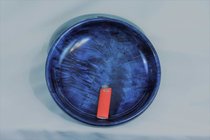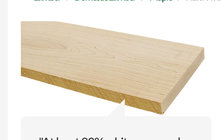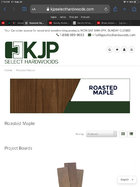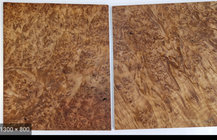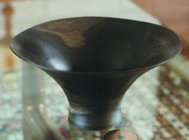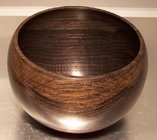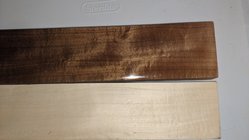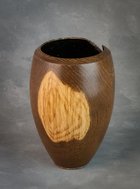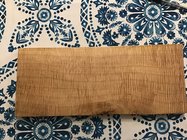odie
TOTW Team
- Joined
- Dec 22, 2006
- Messages
- 7,113
- Likes
- 9,729
If you offer two bowls, free of embellishments and identical in all aspects to the buying public.....one being maple, and the other walnut......the majority of those who would be interested in having it in their home will pick the walnut bowl much more often than the maple bowl. From my observations, I'd say the ratio is somewhere around 4 or 5 to 1. For those of us who are "bowl turners", the unfortunate reality of this is the ratio of dark to light woods available to us is somewhere in the neighborhood of exactly the opposite!
Of course, all of the above is my opinion.....and it's also my opinion that most of those buyers are more interested in "natural" appearing bowls, rather than bowls in an unnatural altered state. All of this has led me to do a bit of experimenting on woods like maple and ash in an attempt to darken them, without losing the desirability attributed to having the appearance of a naturally occurring color. Everything I've tried has been unsuccessful, and the results are always a bit fake looking. The difference can be subtle, but the subconscious mind does recognize it. It is the same sort of thing as the appeal a perfect ogee curve has over an almost-perfect ogee curve......subtle, but our subconscious mind does pick it up.....whether or not we can intelligently acknowledge the differences...
Is this goal impossible, or is there a way to accomplish the intended results?
-----odie-----
Of course, all of the above is my opinion.....and it's also my opinion that most of those buyers are more interested in "natural" appearing bowls, rather than bowls in an unnatural altered state. All of this has led me to do a bit of experimenting on woods like maple and ash in an attempt to darken them, without losing the desirability attributed to having the appearance of a naturally occurring color. Everything I've tried has been unsuccessful, and the results are always a bit fake looking. The difference can be subtle, but the subconscious mind does recognize it. It is the same sort of thing as the appeal a perfect ogee curve has over an almost-perfect ogee curve......subtle, but our subconscious mind does pick it up.....whether or not we can intelligently acknowledge the differences...
Is this goal impossible, or is there a way to accomplish the intended results?
-----odie-----
Last edited:

